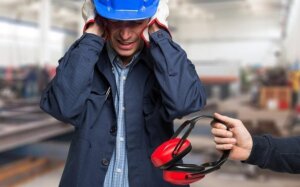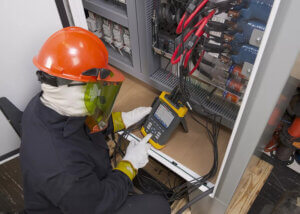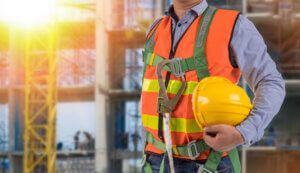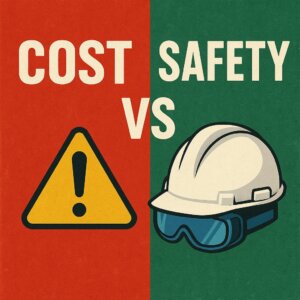Have you ever felt that your safety isn’t adequately protected at work? Whether slipping on a construction site or being exposed to toxic chemicals, safety hazards are everywhere. Fortunately, Personal Protective Equipment (PPE) can be the key solution to these issues. In this article, we’ll explore the top 10 common workplace safety hazards and provide solutions for protecting employees through the use of appropriate PPE.
Top 10 Workplace Safety Hazards and PPE Solutions
| Safety Hazard | Recommended PPE |
|---|---|
| 1. Slips and Falls | Non-slip shoes, Safety boots |
| 2. Mechanical Injuries | Cut-resistant gloves, Protective clothing, Safety boots |
| 3. Chemical Exposure | Chemical-resistant suits, Gloves, Respirators |
| 4. High-Temperature Work | Heat-resistant clothing, Fire-resistant gloves, Helmets |
| 5. Noise Exposure | Ear muffs, Earplugs |
| 6. Vibration Injuries | Anti-vibration gloves, Vibration-reducing tools |
| 7. Hazardous Gases and Dust | Dust masks, Respirators, Face shields |
| 8. Falling Objects | Safety helmets, Protective glasses |
| 9. Electrical Hazards | Insulated gloves, Electrical protection gear |
| 10. Psychological Stress and Fatigue | Comfortable, supportive PPE |
Use the chart above to quickly understand the most common safety hazards in various workplaces and how wearing the right PPE can significantly reduce these risks.
1. Preventing Slips and Falls: Non-Slip Shoes and Safety Boots
Hazard:
Employees are at high risk of slipping or falling on wet, slippery, or uneven surfaces, especially in environments like construction sites and warehouses.
Solution:
Wearing non-slip shoes or safety boots is an effective way to prevent slip-and-fall accidents. These PPE products provide excellent traction and stability, reducing the risk of falling.

2. Mechanical Injuries: The Role of Protective Gloves and Safety Clothing
Hazard:
Employees in factories, warehouses, and construction sites often come into contact with rotating machinery and sharp tools, making mechanical injuries a common accident type.
Solution:
Wearing cut-resistant gloves, protective clothing, and safety boots effectively prevents workers from coming into contact with hazardous machinery parts or sharp objects. These PPE products provide extra protection, reducing the risk of injury.

3. Chemical Exposure: How PPE Prevents Harmful Substance Contact
Hazard:
Many industries involve the use of chemicals, and chemical spills or toxic fumes pose a serious threat to employees’ health. In environments such as chemical plants or laboratories, exposure to hazardous substances can cause skin burns, respiratory issues, and other health problems.
Solution:
Wearing chemical-resistant protective suits, gloves, and respirators effectively reduces the risk of chemical exposure to the skin and respiratory system, preventing poisoning or burns.

4. Working in High-Temperature Environments: Protective Clothing and Heat-Resistant Gear
Hazard:
High-temperature environments, such as foundries or power stations, can lead to heatstroke, dehydration, and burns. Employees who are exposed to high heat for extended periods may face serious health issues without proper protection.
Solution:
Wearing heat-resistant protective clothing, fire-resistant gloves, and helmets effectively shields employees from the dangers of high temperatures, ensuring safe working conditions.

5. Noise Exposure: Hearing Protection with Ear Muffs and Earplugs
Hazard:
High noise levels in workplaces, such as construction sites or production lines, can lead to permanent hearing loss if employees are exposed to it for prolonged periods.
Solution:
Wearing high-quality ear muffs or earplugs helps reduce the harmful effects of noise exposure and protects employees’ hearing from long-term damage.

6. Vibration Injuries: Wearing Anti-Vibration Gloves and Tools
Hazard:
Employees who operate power tools or heavy machinery often experience continuous vibration, which can lead to vibration-related health issues, such as hand-arm vibration syndrome.
Solution:
Using anti-vibration gloves, vibration-reducing tools, and protective equipment can effectively minimize the impact of vibration on the hands and body, reducing the likelihood of occupational illnesses.

7. Hazardous Gases and Dust: Respiratory Protection Equipment
Hazard:
In many work environments, harmful gases or toxic dusts are generated, which can cause severe health problems like lung disease or cancer if inhaled over time.
Solution:
Wearing high-efficiency dust masks, respirators, and face shields is crucial to prevent inhalation of harmful substances and protect employees from toxic dust and gases.

8. Falling Objects: The Importance of Helmets and Safety Glasses
Hazard:
In environments such as construction sites or storage areas, falling objects pose a significant risk of head injuries and other bodily harm.
Solution:
Wearing safety helmets and protective glasses can effectively prevent injuries caused by falling objects, safeguarding employees’ heads and eyes from impact.

9. Electrical Hazards: Insulated Gloves and Electrical Protection Gear
Hazard:
Electrical hazards are a serious risk, especially when working with electrical equipment. Accidental contact with live wires can cause severe electrical burns or even fatal injuries.
Solution:
Wearing electrically insulated gloves, footwear, and specialized electrical protective gear can prevent electrical shocks and injuries, ensuring safe working conditions for employees in electrical environments.

10. Psychological Stress and Fatigue: Comfortable and Supportive PPE
Hazard:
Long hours of high-intensity work can lead to mental fatigue and stress, which can affect employees’ focus and increase the risk of accidents.
Solution:
Choosing comfortable, breathable PPE that offers good support can improve employee comfort, reduce physical fatigue, and help minimize stress, enabling better performance and safer working conditions.

Conclusion
Workplace safety hazards are ever-present, but by wearing the appropriate PPE, we can significantly reduce these risks and ensure the safety and health of employees. Providing employees with the right PPE products is not only a company’s responsibility but also the foundation of a safe and productive work environment. Safety comes first—select the right PPE to protect every worker’s life.
Check out our PPE product range to ensure your employees’ safety today! [Link]








